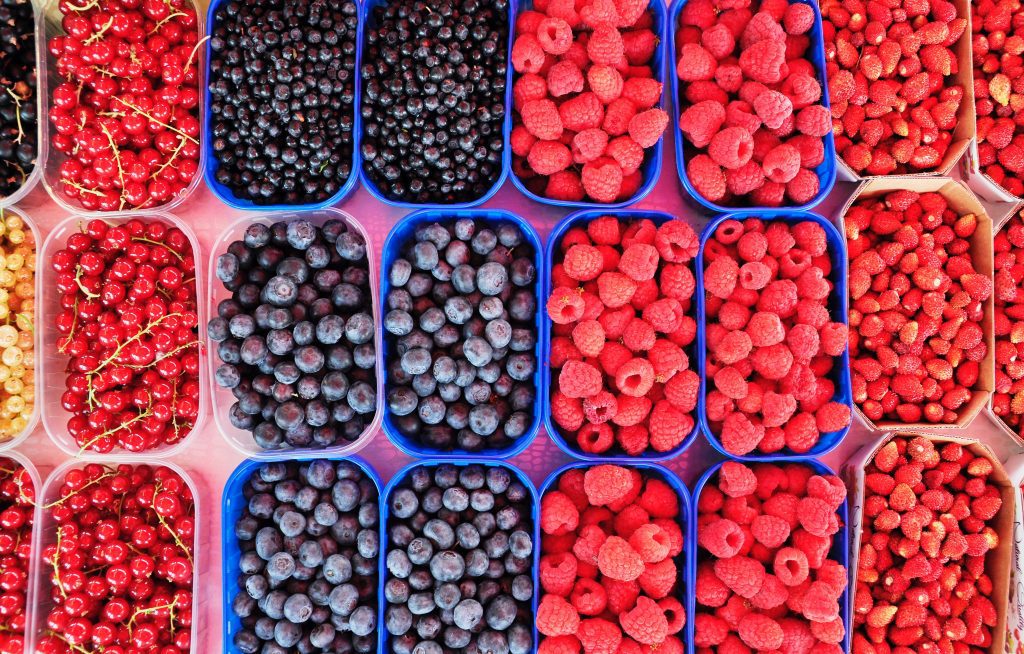By Allison Sadlier // SWNS
NEWS COPY w/ VIDEO + INFOGRAPHIC
While many Americans are looking for ways to save money right now, unused fruit may be a hidden culprit according to a new study.
The average person throws away $520 a year ‒ in old fruit.
A study examining fruit shopping preferences found the average person throws $10 worth of fruit away and wastes three pieces of fruit in a week.
Seven in 10 confessed to not eating as much fruit as they should in spite of wasting so much on a weekly basis.
It appears many Americans need more education when it comes to healthy diets since nearly three in four don’t know how to incorporate fruit into their diets...or what even qualifies as fruit.
Forty-three percent of respondents think of tomatoes as vegetables and one in four wrongly think avocado is one, too.
The survey conducted by OnePoll on behalf of the Washington Red Raspberry Commission revealed one in four undershot the recommended serving of fruit a day (five) by two servings.
When it came to why respondents skip out a serving of fruit, a third claimed they didn’t have enough time (35%), or they just forgot (34%).
Thirty-two percent said it’s too expensive, but one in four said they don’t like fruit at all (23%). Of those who said they don’t like fruit, 41% said it’s because fruit goes bad too fast.
During this time of COVID-19, respondents are stocking their shelves with frozen produce they know will last.
Over a third (37%) reported they are buying more frozen fruit than they were before the crisis with 43% saying they intended to save it for later.
Four in five (86%) think it’s important to purchase food grown and processed in the U.S., however that can be a challenge for some. One in four (23%) respondents reported it is difficult to identify where fruit is grown when shopping in a grocery store.
Henry Bierlink, executive director of the Washington Red Raspberry Commission said, “The survey underscores the fact that many Americans may want to lean on frozen fruit to ensure they don’t end up with so much waste. Here in Washington state we’re growing 90 percent of the nation’s frozen red raspberries, and our farmers are pleased their fruit can provide people with nourishment year-round and at the highest quality.”
Beyond supporting local farmers, respondents connect quality to specific geographical regions.
Sixty-eight percent associate certain parts of the country with certain foods. Three in four admit to having higher expectations on food from one of these well-known regions, too.
The current pandemic likely has many Americans more aware of where their food is grown or raised. Yet, when it comes to raspberries, 89% of respondents didn’t recognize Washington as the country’s largest producer of frozen red raspberries.
Bierlink added, “What many people don’t realize is that frozen Washington Red Raspberries go straight from our farms to freezing within hours of being picked at the peak of ripeness, locking in nutritional value, flavor and quality. In fact, that’s happening right now as we’re in the midst of harvest. Of course, it’s great to see that respondents perceive raspberries as one of the top 10 healthiest fruits, because in fact raspberries have more fiber than any other berry with 6 grams per cup.”
REASONS PEOPLE DON’T GET ENOUGH FRUIT
- Not enough time 35%
- I forget 34%
- Too expensive 32%
- It always goes bad 29%
- I don’t like fruit 18%
PERCEIVED HEALTHIEST FRUITS ACCORDING TO RESPONDENTS
- Apple 32%
- Banana 31%
- Orange 26%
- Pear 17%
- Lemon 16%
- Blueberries 15%
- Avocado 14%
- Pineapple 12%
- Grapefruit 12%
- Raspberries 11%
- Strawberries 11%
- Pomegranates 10%
- Grapes 10%
- Cherries 8%
- Blackberries 8%
- Mango 8%
- Guava 6%
